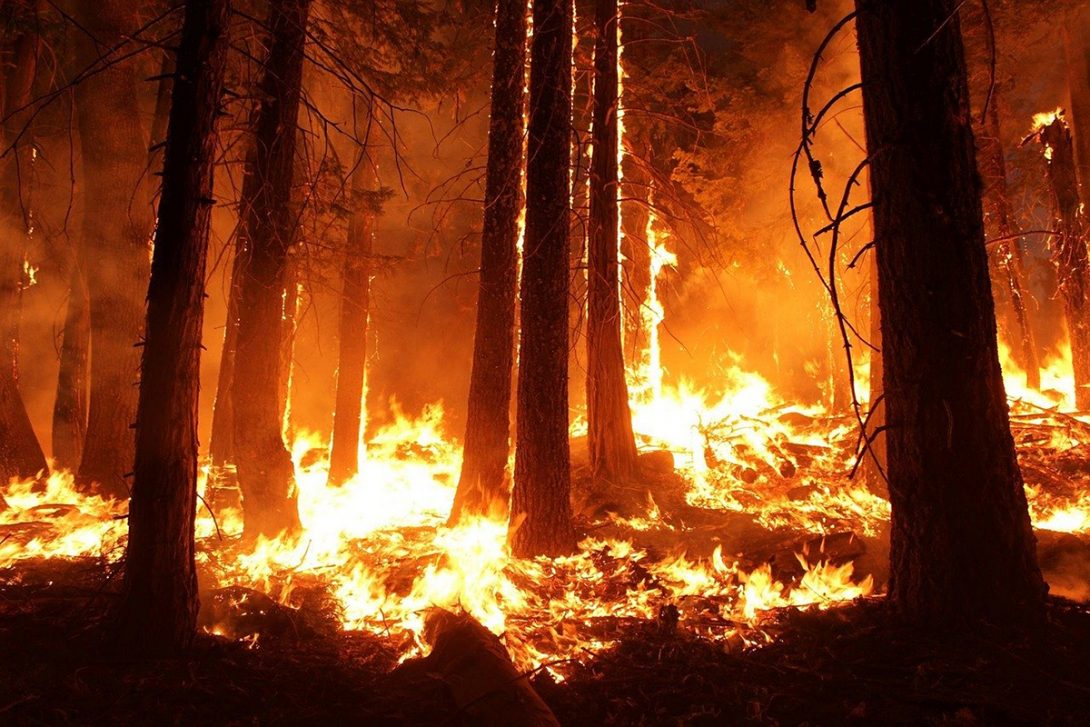Professor Yarin uses plants to research fighting forest fires
1

Forest fires cause tremendous trouble as they threaten lives, homes, communities, and destroy millions of acres of land annually, leaving billions of dollars of damage in their wake.
While firefighters use a wide range of tactics to combat the fires, recent research conducted by UIC Distinguished Professor Alexander Yarin and his team in the Multiscale Mechanics and Nanotechnology Laboratory at UIC shows how some plants can help to understand the intrinsic mechanism of forest fires. Professor Eyal Zussman, of the Technion – Israel Institute of Technology, and UIC student Wendy Zhang collaborated on the research.
The results of their research were published in the journal Experimental Thermal and Fluid Science under the title “Heat and mass transfer resulting in eruptive jetting from stems and leaves during distillation stage of forest fire.”
“The internal mechanisms of forest fires are not fully understood, which complicates their prediction, prevention and quenching,” said Yarin, of the Department of Mechanical and Industrial Engineering.
Forest fires are sustained by volatiles, which emanate from leaves, branches, and more. Fuel is supplied by trees and burning with the surrounding oxygen.
“An additional element is that inside the wood you have some humidity. Since water is not a fuel, it acts as a ballast in the flame,” he said. “As the water is heated it decreases the flame temperature, and as a result it can extinguish the flame.”
To understand whether there is combustion in this distillation stage, which is the main stage of a forest fire, the team looked at how volatiles and water are delivered to flame from plants. The results will determine if a flame will surround a tree or not during the distillation stage.
“What we found here is that the supply of volatiles, as well as water, to a flame from a tree or plant that is heated by the surrounding flame, which constitutes the fuel and water vapor supply, is like a self-sustaining process,” he said. “This process of supply happens in an explosive way. You supply heat and suddenly you have an explosion in the form of fast fuel and water vapor jets issued from the plants. We demonstrated these explosions and conducted model experiments with real plants of two types.”
The researchers demonstrated this experimentally, and then they performed model experiments where they took a needle, filled it with either water or ethanol and heated it from below.
“We have seen that there are some situations where there’s an explosion coming out of the needle exit,” he said. “Sometimes it’s like a strong jet is coming out that is already vaporized; sometimes it’s like a droplet of fuel is spit out. We demonstrated that if you have ethanol – when ethanol is spit like that it catches flame and you get a new flame, which is like a flamethrower from the needle.”
Essentially, the paper says that the existing models of forest fire propagation should account for this phenomenon because this is probably one of the most important mechanisms for fuel supplies in flames.
“For people trying to manage a forest, they should have plants here and there that have a lot of water inside, such as eucalyptus or Middle Eastern oak. Then according to what is found in this paper, you have a significant supply of water that will provide the same mechanism like a fire extinguisher,” Yarin said. “The model theory developed in the work is essentially a theory of a kettle, which is in good agreement with the experimental observations.”
The research is the beginning of a series of projects. To learn more about Yarin’s research, visit Multiscale Mechanics and Nanotechnology Laboratory.